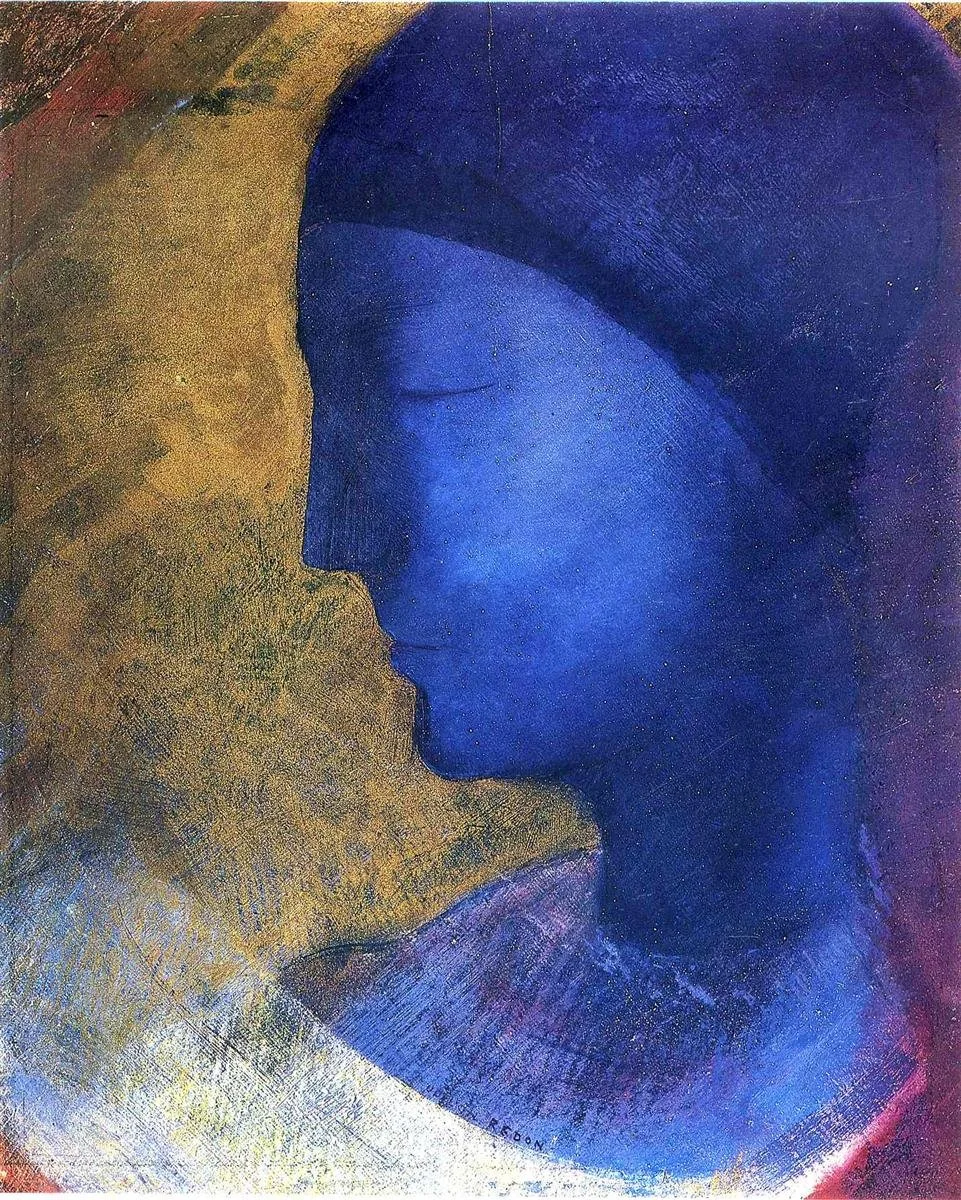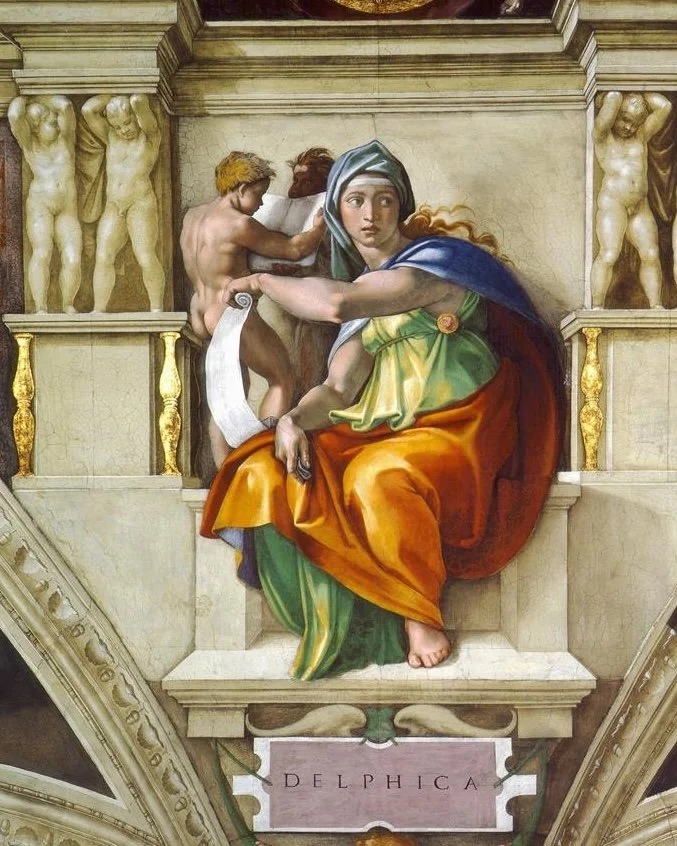from the Music of Spheres to the Music of Cells
“True definition of science: the study of the beauty of the world.” Simone Weil
music, harmony, mathematical order,
and Cosmic/Biological Resonance
odilon redon
the golden cell, 1892
“In listening to music, one is therefore directly perceiving an implicate order.
Evidently this order is active in the sense that it continually flows into emotional, physical, and other responses that are inseparable from the transformations out of which it is essentially constituted.”
David Bohm
Musica Universalis
Scientific validation of music, harmony, and universal order as mirrored in both the microcosm (human body) and macrocosm (universe) draws on ancient texts and modern scientific research. Recent approaches, such as scale invariance in consciousness, bridge the gap between philosophical traditions and empirical inquiry.
Modern biomedicine, neuroscience, and biomusicology are now confirming, with rigorous data, many ancient ideas on resonance, entrainment, rhythm, and pitch as mechanisms that underlie healing at both the cellular and systems levels.
A Few Chords in a Thought Stream About the Symphony of Life
Or how knowledge of order deepens, not diminishes, the experience of beauty.
Henri Martin,
harmonie, 1894.
“The beauty of a flower is not diminished by understanding how it works. In fact, the more we understand, the more beautiful it seems.”
Richard Feynman, “The Pleasure of Finding Things Out”
Absence of knowledge is not knowledge of absence.
Harmony
On the macro scale, harmony manifests in the grand unity of complex systems—architecture reflecting cosmic order, music mirroring universal mathematical relationships, and natural structures echoing geometrical laws seen in galaxies or branching trees.
This correspondence between micro and macro structures fosters a deep connection between individual perception and the broader universe, suggesting that what is experienced as beautiful, both in personal details and everlasting compositions, is guided by shared principles of proportion and harmony that transcend cultural boundaries and resonate at every scale.
Harmony - A Universal Human Principle
The cross-disciplinary connection suggests that harmony is not just a property of music but a universal human principle, capable of shaping both auditory and visual experiences through rational, structured relationships.
Despite the seemingly universal theme of harmonic resonance in various disciplines, its presence in biological systems has only recently been identified. Contrary to the traditional belief that a biological system is either at steady state or cycles with a single frequency, it is now appreciated that most biological systems have no homeostatic ‘set point’ but rather oscillate as composite rhythms consisting of superimposed oscillations. These oscillations often cycle at different harmonics of the circadian rhythm, and among these, the ~12-hour oscillation is most prevalent.
Crystals
German scientist, Victor Mordechai Goldschmidt (1853–1933) showed that the angles in crystals and the proportions between their sides and planes could be represented by musical relationships. By researching numerous sorts of matrices and exact measurements, he showed that harmonic musical principles play an essential part in the world of crystals and their growth. Goldschmidt’s On Harmony and Complication (1901) is a work of theoretical crystallography that reaches beyond its immediate scientific domain to propose a broader metaphysical and aesthetic doctrine. Goldschmidt attempts to show that the concepts of harmony and complication are not only central in music and color but are deeply embodied in nature—especially in the structure of crystals—and in human perception.
Throughout, he interweaves scientific observations (especially from crystallography) with aesthetics and philosophy, seeking a unified principle: that harmony is the alignment (or “concordance”) of the external world with human sensibility, i.e., objective harmonies - the physical, mathematical structure of tones, colors, and crystals - and subjective harmonies - perception, and aesthetic experience.
Modern extension of Victor Mordechai Goldschmidt’s insight that the geometry and proportions of crystals can be expressed in musical ratios (harmonia): If crystal order in minerals mirrors harmonic principles, then the body’s own biological crystals and semi-crystalline structures may also be susceptible to music as vibrational input. For example, in humans:
· Structural crystals (bones, teeth, cartilage, ears) provide strength and resonance.
· Sensory crystals (inner ear, pineal gland) transduce vibration into perception and bioelectric regulation.
· Cellular crystalline lattices (microtubules, collagen, structured water) organize biological order.
· Pathological crystals (stones) demonstrate direct vulnerability to acoustic resonance.
Music, therefore, may not only be perceived but also physically transduced by crystalline structures in the body, making the aesthetic experience of harmony both biological and mineral.
Thus, music is not only metaphorically harmonious — it physically interacts with crystalline structures inside us, aligning external order with internal bio-geometry.
Modern physics, astrophysics, biology, and biomusicology demonstrate that the same mathematical laws govern everything from vibrating strings to brain rhythms, to stellar oscillations, to spacetime itself.
The universe oscillates and resonates on every scale (atomic to cosmic).
These oscillations follow precise mathematical ratios analogous to musical intervals.
Biological and psychological systems are tuned to recognize and respond to harmonic order.
In this sense, cosmic harmony is scientifically real: music is one human-scale manifestation of universal laws of resonance, symmetry, and proportion.
Michelangelo
The Delphic Sibyl,
Sistine Chapel Ceiling- 1509.
If algorithms are to be disclosed for us to have the option given to us up front, would you choose the algorithm for harmony, beauty, and order?
Marina de Moses



